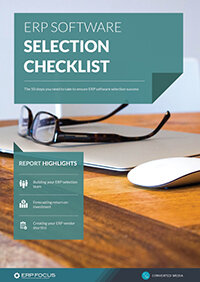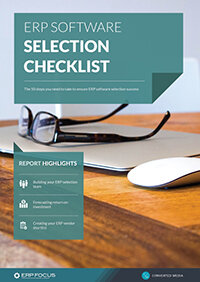3 things your warehouse hates about legacy ERP
Many of today’s ERP vendors advertise that they offer warehouse management features; and they do. But ERP systems were built on a core that was usually MRP or accounting. This heritage can be seen throughout ERP in transactions and reports. While this may not have create bad processes, it may have represented a way of thinking that your warehouse manager is not used to.
1. Built on disparate modules
In a typical legacy ERP system you will find a purchasing module and a variety of screens to place and manage purchase orders. When purchased material arrives, there are a set of receiving screens found under a separate top menu for those transactions. Sales orders, shipping, and general inventory management each have their individual top menu structure. All of these modules interact with the accounting system on their own.
Recommended reading: 50-step ERP software selection checklist
Efficient ERP warehouse management is built on the flow of items into and through the warehouse. An SKU arrives at the receiving dock and the first question is: When will this ship out and where is the best place to store it until that moment? Unless your ERP system displays flawless integration between disparate modules, warehouse management will be less than optimal.
2. Transaction-based and not built for execution
All ERP systems should capture transactions accurately and in real-time. If you want to know who performed a transaction and exactly what time it was done, ERP should provide your answer; warehouse ERP users want to know the answer to many different questions.
ERP systems were built on a core that was usually MRP or accounting and this heritage can be seen throughout ERP in transactions and reports.
If one wants to know how long a particular worker of a crew takes to put away an item from receiving, the data may be in the ERP but is often difficult to identify or report on in legacy systems. ERP will not usually provide a suggested best bin location but can often provide the decision support through business process tools. Assume the item received is put away in the perfect location today, what about tomorrow? Is that location still the best one?
3. Poor user experience
Warehouse people do not work in a nice office environment at a comfortable desk. They work standing or sitting on a fork lift vehicle maneuvering narrow aisles. They operate counting scales in the back corner of the building and spend time daily fending off production people who want another part because there was a fault on the one given to them yesterday.
Third party providers often have answers for these environmental concerns. Legacy ERP must hate warehouse workers as those work aides are very rarely built into the system. Warehouse ERP users enter transactions continuously all day long and those transactions should not require removing gloves to type data on a keyboard.
ERP implementation teams must consider all departments in the enterprise for a new system to be accepted.
Free white paper

60-Step ERP Selection Checklist
Get the comprehensive checklist for your ERP selection project

Related articles
-

ERP & Logistics: Optimizing the Supply Chain
Read about the steps you can take to optimize your supply chain through ERP software logistics ma...
-

Secret KPI: Why Your ERP Implementation Team Matters More Than Software
Learn how Godlan ensures successful ERP implementation for manufacturers with proven strategies &...
-

Why your ERP improves the way your warehouse operates
A complete guide to warehouse ERP, the benefits, and the differences between WMS

